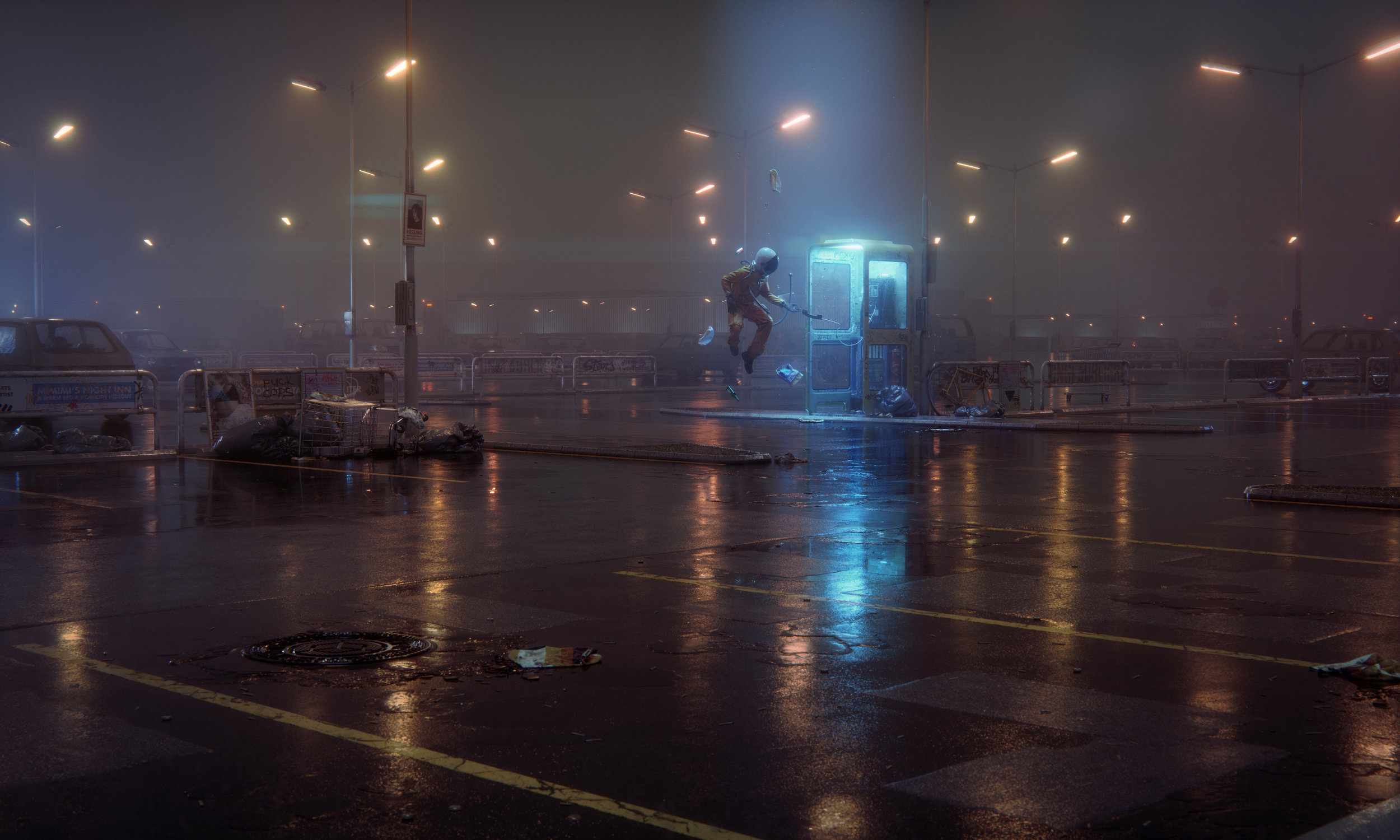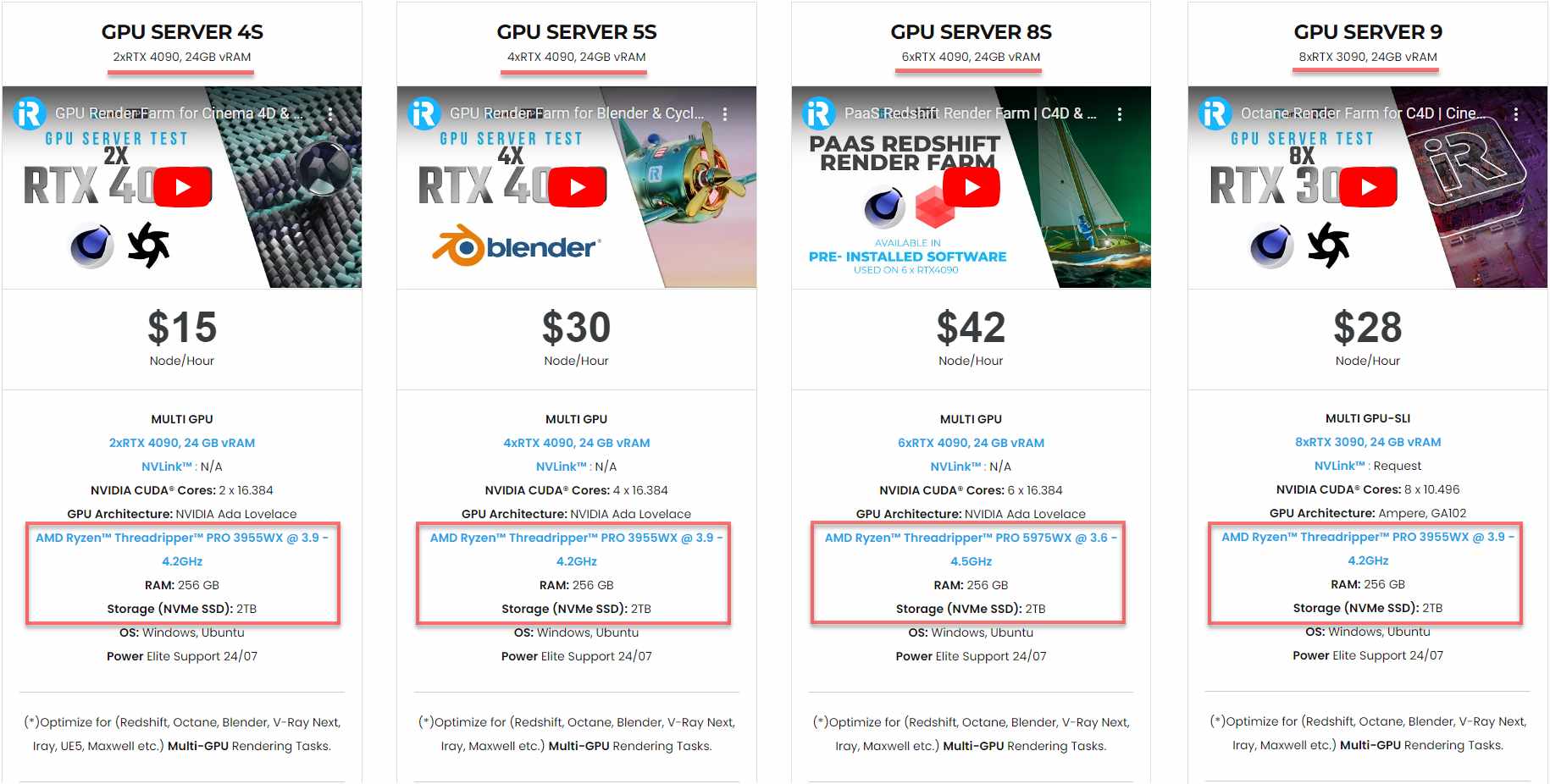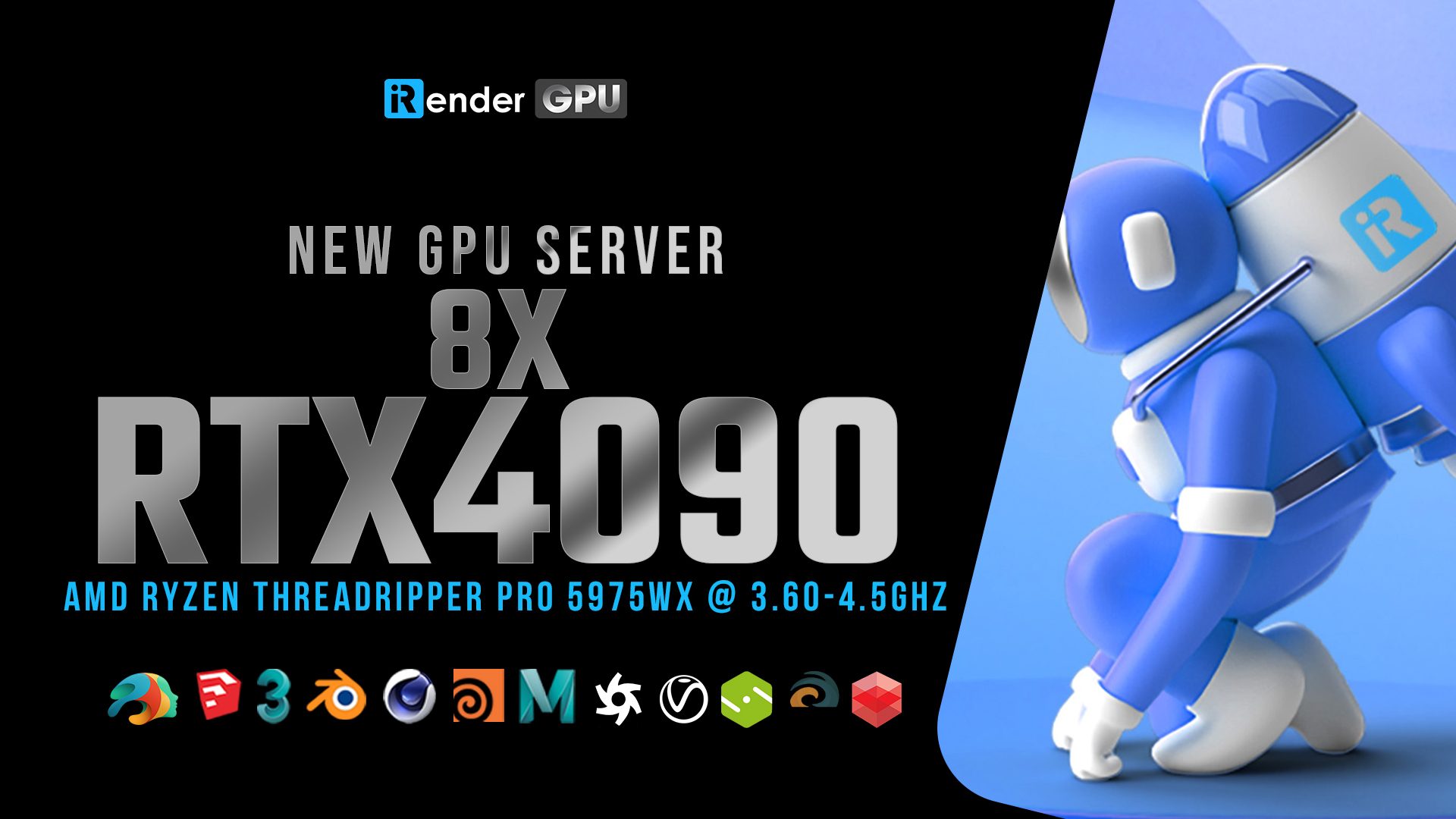Best multi-GPU render engines for Blender
Rendering is essential for any 3D artist’s workflow. It’s crucial to have a fast and efficient render engine to produce high-quality renders quickly, allowing for increased productivity and timely deliverables. Blender, a widely used open-source 3D software, supports multiple render engines that can leverage multiple GPUs’ parallel processing power to speed up rendering times. In this article, we evaluate and compare Blender’s top render engines optimized for multi-GPU configurations. Let’s dive in!
Blender and its supported multi-GPU render engines
Blender
Blender is a widely used, open-source 3D creation software that supports the entirety of the 3D pipeline from modeling, rigging, animation, simulation, rendering, compositing, motion tracking, and video editing to game creation.
Image Credit: Blender Studio
One of Blender’s key advantages is its ability to support multiple render engines. Its open-source nature allows developers to create and integrate new render engines into the software, making it a highly customizable and extensible platform.
A significant benefit of Blender’s support for multiple render engines is its ability to support render engines that can harness the power of multiple GPUs. By leveraging multiple GPUs’ parallel processing power, these render engines can speed up rendering times, allowing artists to produce high-quality renders quickly. This is particularly important for 3D artists who require fast rendering times for increased productivity.
By providing a flexible and powerful toolset that can be tailored to their specific needs and workflow, Blender has become an ideal choice for 3D creation and rendering.
What to look for in a multi-GPU render engine for Blender
When choosing a multi-GPU render engine for Blender, there are several key factors to consider. Below are some of the most important ones.
-
- Pricing: The render engine’s pricing model, includes one-time purchases, subscriptions, and free options.
- Integration Type (plug-in, built-in): can affect its performance and compatibility with Blender. Built-in engines are generally more stable and better integrated, while plug-ins may offer more features and flexibility, but usually require additional setup.
- Render engine type (biased, unbiased): Biased engines are typically faster but may sacrifice some accuracy, while unbiased engines are more accurate but may be slower.
- Rendering Technology (OpenCL, CUDA, OptiX, HIP, etc) and GPU Compatibility: The rendering technology and GPU compatibility of the render engine can affect its performance and compatibility with different hardware configurations.
- Ease of use: The render engine’s user interface and ease of use, especially for artists who are new to rendering.
- Performance: The render engine’s ability to utilize multiple GPUs efficiently and render scenes quickly.
- Supported OS and Blender version: can affect its compatibility with different OS, and Blender versions, thus increasing or decreasing the scope of use for a render engine.
A comparison of the best multi-GPU render engines for Blender
Detailed review of each render engine
Cycles
Cycles is Blender’s physically-based path tracer for production rendering. It’s built to provide physically based results out-of-the-box, with artistic control and flexible shading nodes for production needs.
Source: cycles-renderer.org
Pros:
-
- Free: great choice for artists on a budget.
- Open-source: easy to customize.
- Built-in: no additional setup required, compatible with all Blender versions, and seamlessly integrates with the rest of the software’s features and workflows.
- Unbiased: produces physically accurate and realistic render results.
- Hardware compatibility: Cycles supports multiple rendering technologies and GPUs, meaning it can be used on a wide range of hardware, including NVIDIA, AMD, Intel, and Apple GPUs.
- Multi-GPU rendering support for a faster rendering process.
- The most feature-rich renderer: Cycles offers a rich set of rendering features, including powerful PBR shading nodes, accurate subsurface scattering, vector displacement and adaptive subdivision, volume scattering and absorption, cryptomatte support, and more.
- Documentation and Community: Cycles has comprehensive documentation and an active community support system, making it easier for new users to get started.
Cons:
-
- Unbiased: For complex scenes, Cycles’s lack of biasing means longer render times.
- Caustics: Cycles is currently less capable in areas such as caustics than other engines. LuxCoreRender beats Cycles in both accuracy and speed.
OctaneRender
Otoy’s OctanRender is an unbiased, spectrally correct render engine. By leveraging RTX hardware to its fullest extent, Octane can render accurate images at a fast speed right in the viewport.
52HZ by Cornelius Dämmrich
Pros:
-
- Unbiased: produces physically accurate and realistic render results. Octane generally provides cleaner, sharper results out of the box. It’s better for product design which requires the highest physical accuracy.
- Multi-GPU support for a faster rendering process.
- Excellent Multi-GPU rendering performance and scalability: OctaneRender scales almost perfectly with multiple GPUs. In other words, if you use two GPUs, your renders will complete twice as fast as they would with just a single GPU.
- Free version available (with limited features).
- Advanced rendering features: Octane supports a wide range of advanced rendering features, including motion blur, caustics, displacement mapping, subsurface light scattering, volumetric rendering, hair and fur rendering, physical sky and sun, etc.
Cons
-
- Monthly subscription: OctaneRender is a commercial render engine. To access Octane’s full features, users need its license.
-
- Hardware compatibility: Octane supports CUDA, and thus only works with NVIDIA GPUs. This limits the GPU choice for its users.
- Plug-in: requires additional setup.
LuxCoreRender
LuxCoreRender is a physically based and unbiased open-source render engine. Based on state-of-the-art algorithms, it simulates the flow of light according to physical equations, thus producing realistic images of photographic quality.
Source: luxcorerender.org
Pros:
-
- Free: can be used on commercial projects, a great choice for artists on a budget.
- Open-source: easy to customize it to fit your specific pipelines and contribute to the project if you have the needed coding skills.
- Unbiased: produces physically accurate and realistic render results.
- Multi-GPU rendering support for a faster rendering process.
- The design philosophy of LuxCoreRender is a no-holds-barred, fully physically accurate model when computing the render. As a result, it gives some of the most impressive and accurate results out of the box. It also outclasses traditional path-tracers like Cycles with a bevy set of features in place to compute light information even in the most challenging scenes. This makes LuxCoreRender incredibly potent for rendering scenes that focus on heavily refractive objects and caustics, or dimly lit interiors.
- King of caustics, great SSS.
Cons:
-
- Pretty complicated and has many options, but a lack of solid documentation.
- Limited Blender versions support: Stable LuxCoreRender only works with older Blender versions.
- Not a production-based render engine, so there are no provisions for animation and/or temporal accuracy (for example, flickering prevention) for animations.
Radeon ProRender
AMD’s Radeon ProRender is a powerful physically-based path-traced render engine that allows professionals to create stunningly photorealistic images.
Source: amd.com
Pros:
-
- Free: great choice for artists on a budget.
- Open-source: AMD Radeon ProRender is available under SDK, allowing developers to adapt and integrate it into their applications.
- Multi-GPU rendering support for a faster rendering process.
- Hardware compatibility: supports AMD HIP (beta support), OpenCL, or Apple Metal. This allows Radeon ProRender to work seamlessly with a variety of AMD GPUs and CPUs, as well as those from other vendors.
- Full Spectrum Rendering mode: leveraging its Vulcan API backend, allows the combination of both ray-tracing (such as cycles) and rasterization (such as Eevee) to create visually appealing images while still having an interactive real-time viewport experience.
Cons:
-
- Plug-in: requires additional setup.
- Not be as feature-complete as other render engines such as Cycles.
- Not be as fast as other GPU-based render engines, such as OctaneRender.
Redshift
Maxon’s Redshift is a fully GPU-accelerated render engine, designed to meet the specific demands of contemporary high-end production rendering. Redshift has been tailored to support creative individuals and studios of all sizes, by providing a suite of powerful features and integrating with industry-standard CG applications.
Artist: Can Erduman
Pros:
-
- Biased: makes Redshift incredibly fast. By avoiding wasting samples on less important regions with its biased approach, it delivers clean renders much faster than unbiased render engines.
- High level of customization and flexibility: Redshift provides tons of control and customization options to hone in on the exact level of visual fidelity versus speed you require out of the render.
- Multi-GPU support: Redshift supports a maximum of 8 GPUs per session for a faster rendering process.
- Excellent multi-GPU rendering performance and scalability: Redshift scales very well with multiple GPUs and can significantly improve your render times.
- Impressive feature sets: volumetric rendering, tessellation and displacement, hair rendering, dedicated skin shader, and many more.
- High level of customization and flexibility
Cons:
-
- Plug-in: requires additional setup.
- Monthly subscription: Redshift is a commercial render engine. To use it, you need a license. Its monthly subscription is nearly twice as much as OctaneRender.
- Realism: Redshift’s biased method requires more tweaking to minimize artifacts and achieve realism.
Render faster in Cycles, Octane, LuxCoreRender, Radeon ProRender, and Redshift with iRender
iRender powers up your creativity with unlimited GPU rendering resources. Our GPU render farm houses the most powerful 3D rendering machines. Configure from 1 to 8 GPU with top-tier RTX 4090/RTX 3090, Threadripper Pro CPUs, 256GB RAM, and 2TB SSD storage – iRender’s machines can handle any 3D project demands.
Once renting our machines, you will own them as your personal workstations. Therefore, you can install and use any render engines, plugins, and/or other 3D software of all versions (even the newly released ones).
Try our new beast – GPU Server 9S, with 8x RTX 4090s, powered with AMD Ryzen™ Threadripper™ PRO 5975WX @ 3.6 – 4.5GHz and take your multi-GPU rendering to the next level!
Let’s watch our tutorial video and see how the service works:
We are offering an attractive 100% Bonus Program for our new users making the first deposit within 24 hours of registration.
Enjoy a FREE TRIAL to try our RTX 4090 machines and boost your multi-GPU rendering now!
For additional information, please do not hesitate to contact us at [email protected] or mobile: +84915875500.
iRender – Thank you & Happy Rendering!
Reference Source: blender.org, otoy.com, luxcorerender.org, amd.com, maxon.net
Related Posts
The latest creative news from Cinema 4D Cloud Rendering , Blender Cloud Rendering, Redshift Cloud Rendering, Houdini Cloud Rendering , Octane Cloud Rendering, 3D VFX Plugins & Cloud Rendering.















